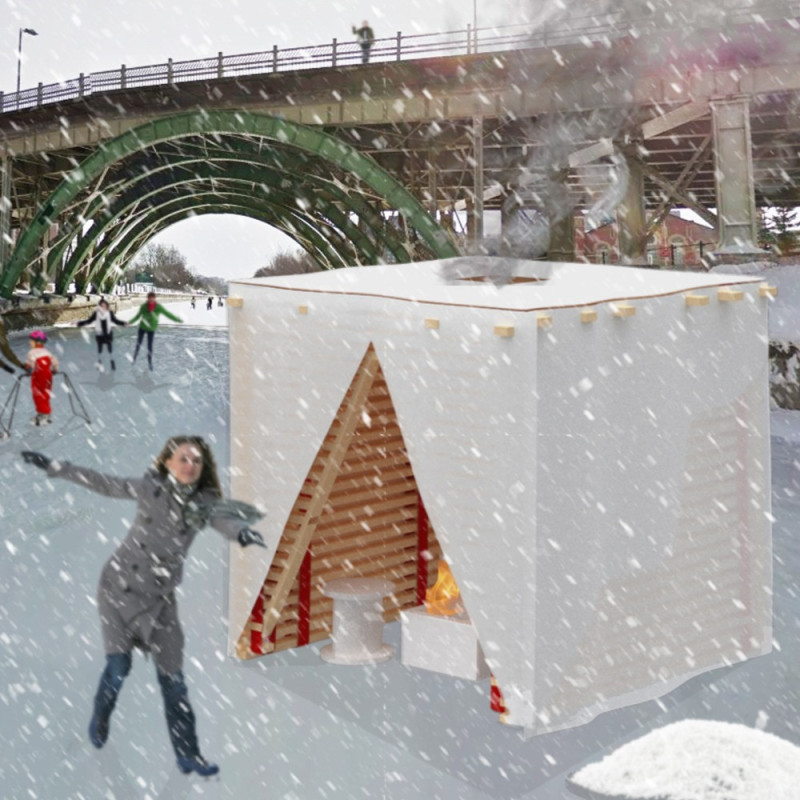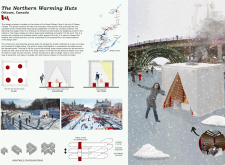5 key facts about this project
The Northern Warming Huts is situated on the frozen Rideau Canal in Ottawa, Canada. Serving as a temporary winter pavilion, it creates a welcoming space for community gatherings during the cold months. The design emphasizes comfort and practical use, ensuring that individuals can enjoy outdoor activities despite winter's challenges.
Design Concept
The pavilion's main goal is to provide a sheltered area that protects visitors from the harsh elements. Its shape is carefully crafted to serve as a barrier against the wind, enhancing comfort for those inside. By creating an enclosed space, the design allows for social interactions in a setting that encourages people to come together even when temperatures drop.
Construction Method
The structure uses an uncomplicated assembly approach. By employing a stacking system, it reduces waste and simplifies the building process. Instead of screws, pieces of timber are held together using straps that create compression. This method supports the pavilion's stability and allows for easy setup and takedown, making it adaptable for different locations throughout the winter season.
Material Selection
Timber is chosen as the primary building material, providing both warmth and a natural feel. The lightweight nature of the lumber makes it easy to transport and assemble. This choice aligns well with the overall aim of the design, as it adds to the inviting atmosphere while respecting the surrounding environment.
Sustainability Principles
The design incorporates sustainability by adhering to cradle-to-cradle principles. This means that once the winter season ends, the timber can either be repurposed or returned, helping to limit waste. Such attention to material lifecycle highlights a commitment to responsible practices within the project.
The pavilion's inviting structure and practical design create a communal space where people can gather. By focusing on both comfort and functionality, it enhances winter interactions, providing an environment where warmth and connection thrive on the ice.



















































